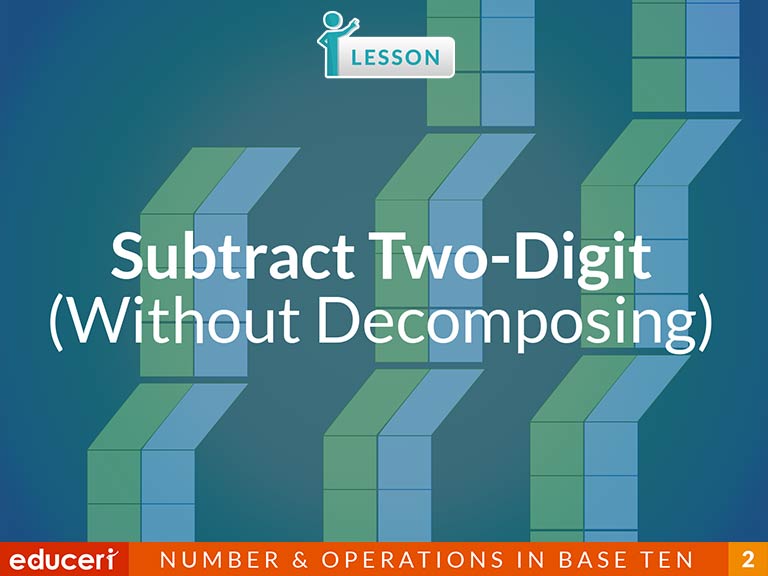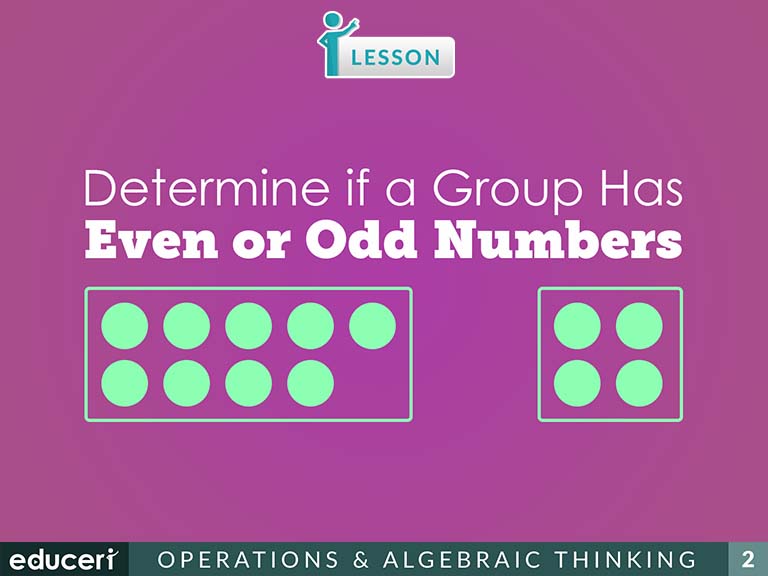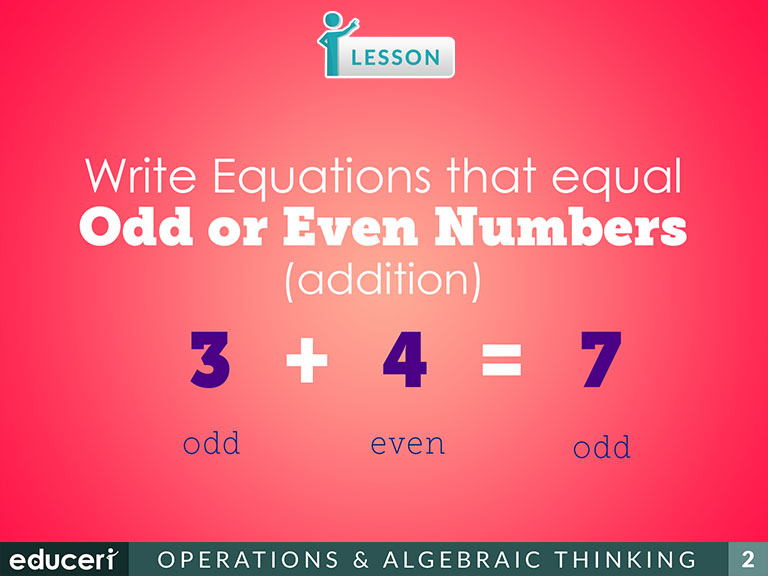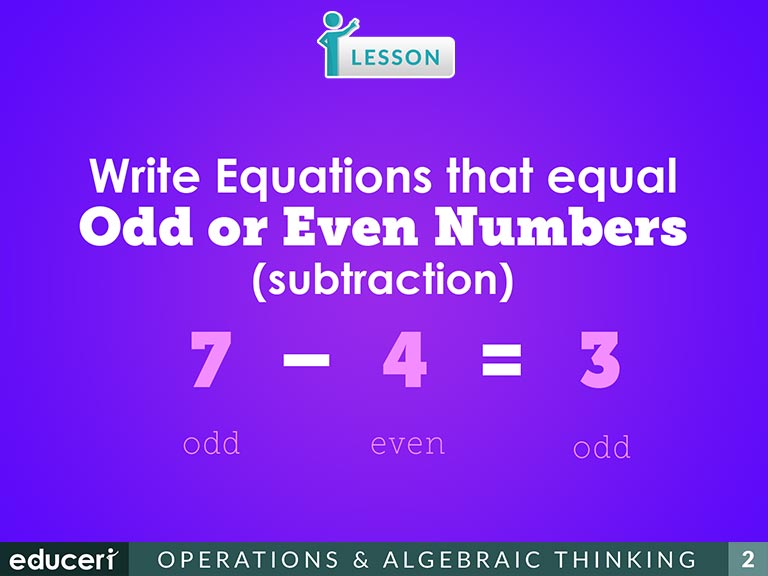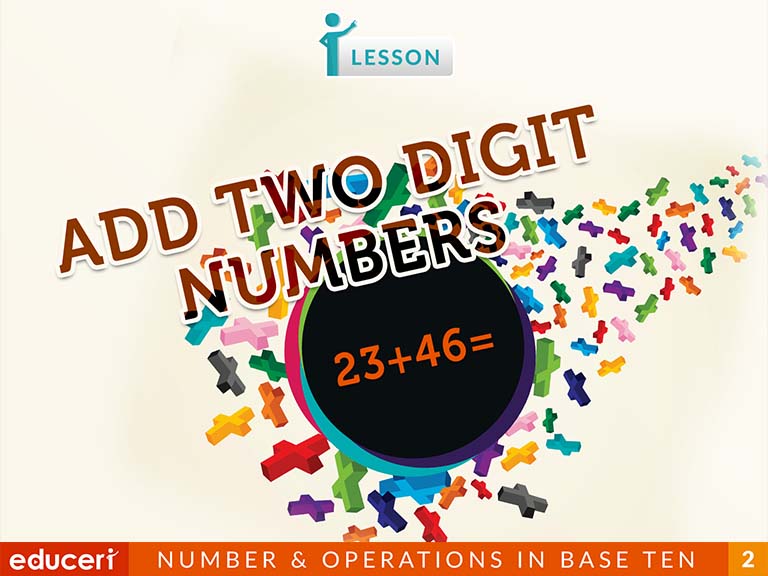All Lessons
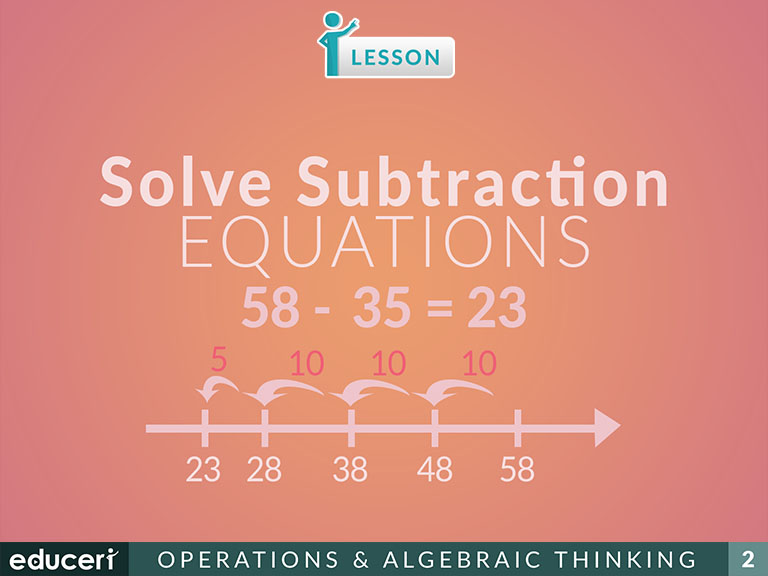
Solve Subtraction Equations
Share This Lesson
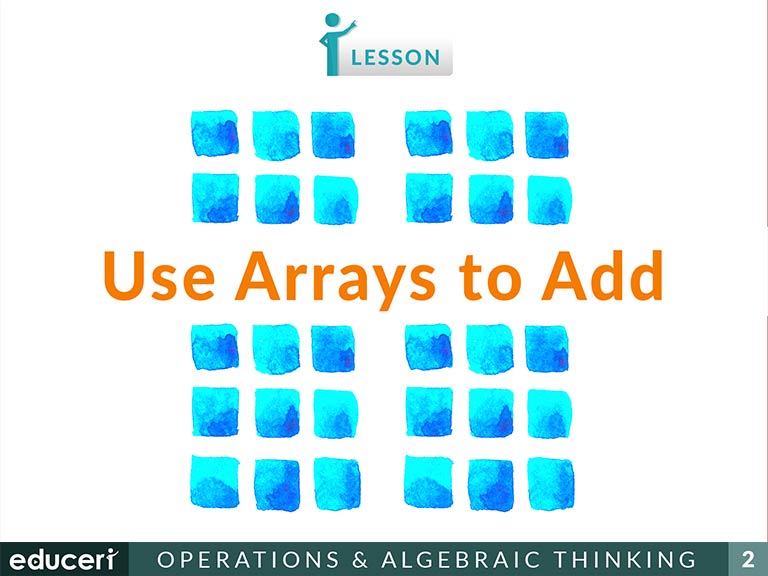
Use Arrays (Addition)
This number sense lesson focuses on using arrays to multiply. The lesson includes research-based strategies and questions that help prepare students for assessments. In this lesson, students complete the number sentence. Then, they use the first number to find the array that has the matching number of rows, and the second number to find the array that has the matching number of columns. Finally, students select the correct array, count the number of objects, and read the number sentence. In addition to the lesson, there are eight pages of Independent Practice and review with questions modeled after current adaptive testing items.
Share This Lesson
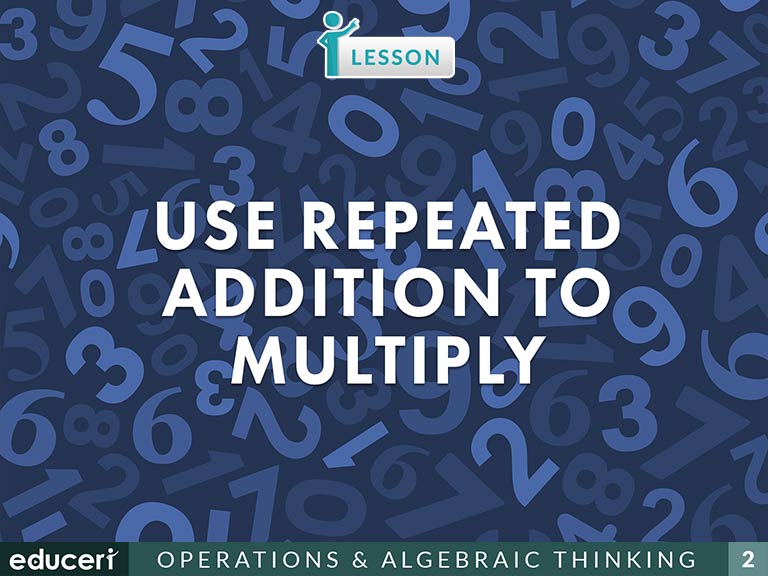
Use Repeated Addition to Multiply
This number sense lesson focuses on using repeated addition to multiply. The lesson includes research-based strategies and questions that help prepare students for assessments. In this lesson, students read the multiplication problem and find the number that is added, and the number of times the number is added. Then, they fill in the repeated addition chart, add the numbers, and read the multiplication problem. In addition to the lesson, there are eight pages of Independent Practice and review with questions modeled after current adaptive testing items.
Share This Lesson
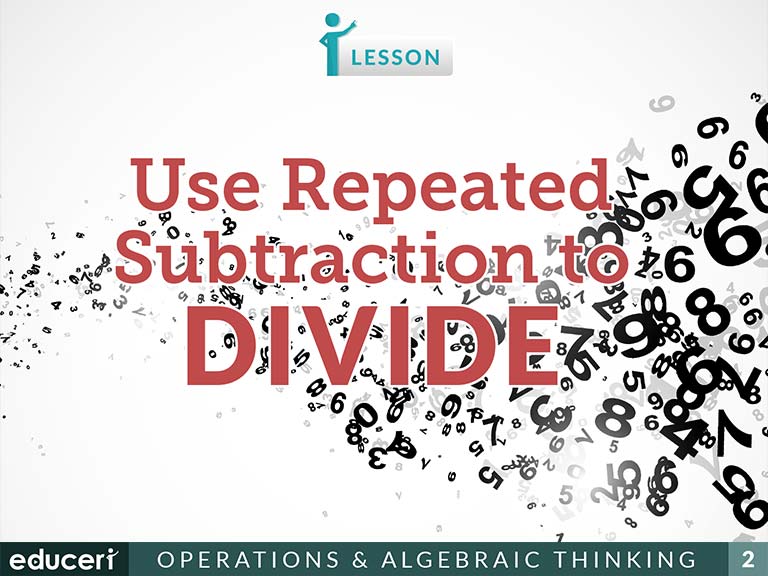
Use Repeated Subtraction to Divide
This number sense lesson focuses on using repeated subtraction to do division. The lesson includes research-based strategies and questions that help prepare students for assessments. In this lesson, students write down the number from the division problem. Then, they subtract the numbers to find out how much is remaining, and repeat the subtraction until there is nothing remaining. Finally, students count the number of times they subtracted and write it in the answer space of the division problem, and read the original division problem aloud. In addition to the lesson, there are eight pages of Independent Practice and review with questions modeled after current adaptive testing items.
Share This Lesson
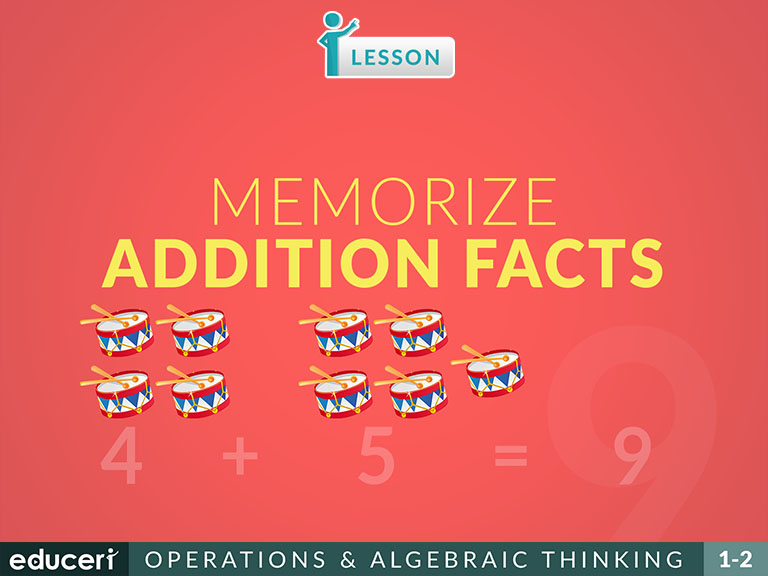
Memorize Addition Facts
This operations and algebraic thinking lesson covers how to memorize addition facts. The lesson includes research-based strategies and strategic questions that prepare students for assessments. In this lesson, students will practice the addition facts of numbers 2 through 10 by a combination of reading aloud and writing each fact many times in horizontal and vertical formats.
Share This Lesson
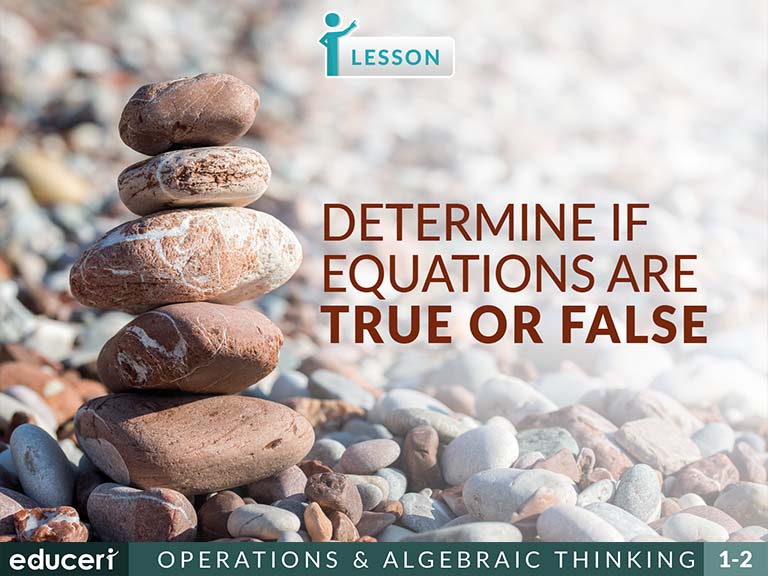
Determine if Equations are True or False
(E) Understand that the equal sign represents a relationship where expressions on each side of the equal sign represent the same value(s)
2.4.A(A) Recall basic facts to add and subtract within 20 with automaticity
(Y1) Represent and solve simple addition and subtraction problems using a range of strategies including counting on, partitioning and rearranging parts (ACMNA015)
ACMNA030(Y2) Solve simple addition and subtraction problems using a range of efficient mental and written strategies (ACMNA030)
1.OA.7 Understand the meaning of the equal sign, and determine if equations involving addition and subtraction are true or false. For example, which of the following equations are true and which are false? 6 = 6, 7 = 8 - 1, 5 + 2 = 2 + 5, 4 + 1 = 5 + 2.
2.OA.22.OA.2 Fluently add and subtract within 20 using mental strategies. By end of Grade 2, know from memory all sums of two one-digit numbers.
From CCSS "For example, which of the following equations are true and which are false? 6 = 6, 7 = 8 – 1, 5 + 2 = 2 + 5, 4 + 1 = 5 + 2."
Share This Lesson
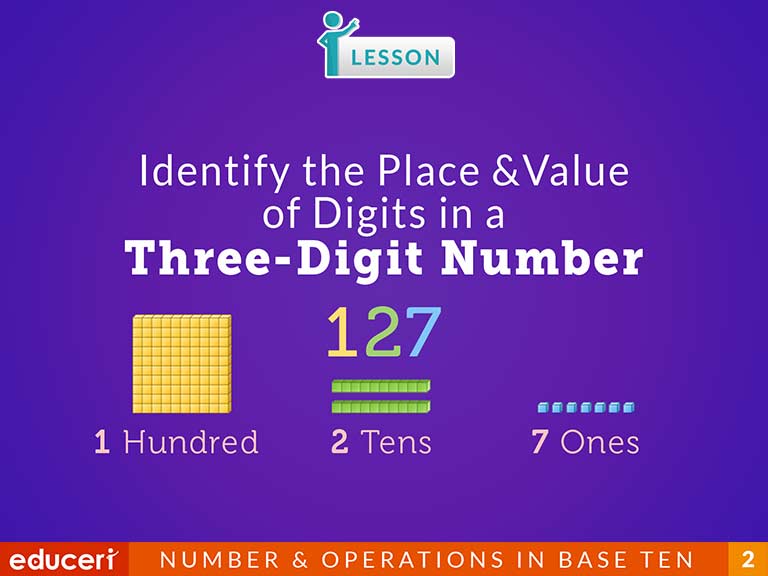
Identify the Place and Value of Digits in a Three-Digit Number
This numbers and operations in base ten lesson covers how to identify the place and value of digits in a three-digit number. The lesson includes research-based strategies and strategic questions that prepare students for assessments. In this lesson, students are asked to identify a certain digit in a three-digit number, identify the place of that digit, and then write the value of that digit in both numerals and words.
Share This Lesson
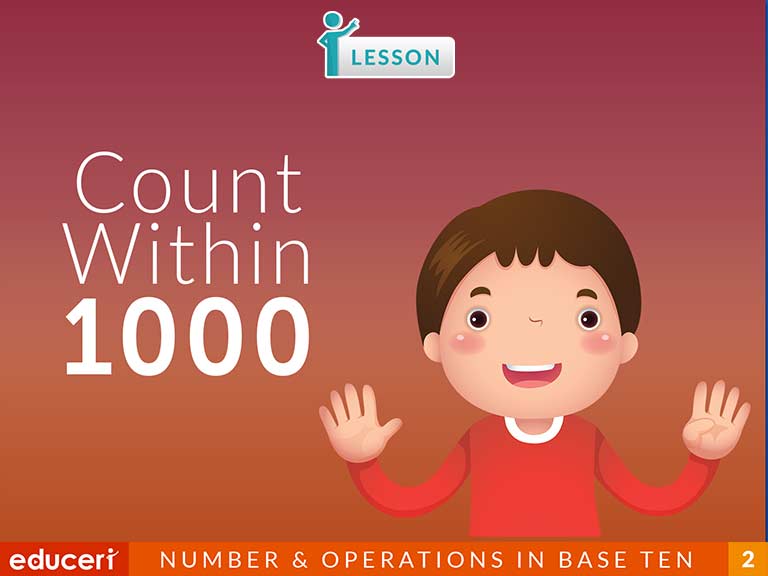
Count Within 1000
This numbers and operations in base ten lesson covers how to count within 1000. The lesson includes research-based strategies and strategic questions that prepare students for assessments. In this lesson, students are asked to read the number in the hundreds place, and then read the two-digit number that follows.
Share This Lesson
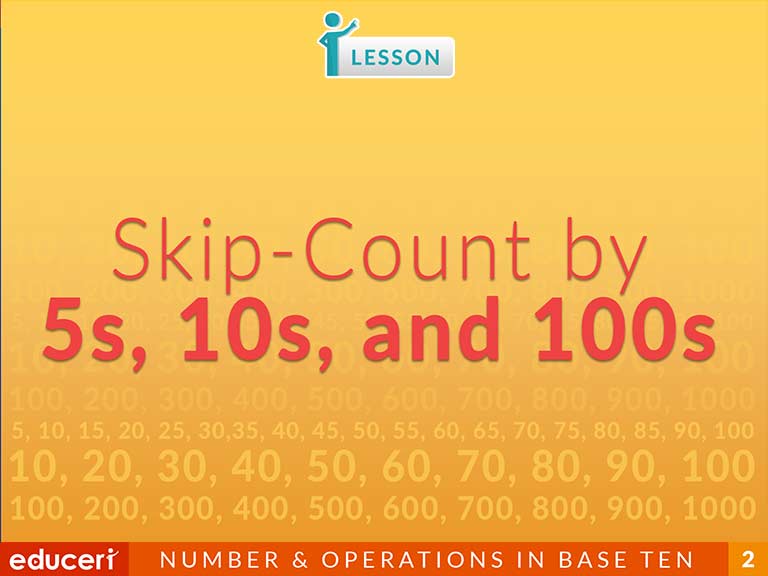
Skip-Count By 5s, 10s, and 100s
This numbers and operations in base ten lesson covers how to skip count by 5s, 10s, and 100s. The lesson includes research-based strategies and strategic questions that prepare students for assessments. In this lesson, students are asked to read the first number, and then write in the next five numbers in a skip-count sequence.
Share This Lesson
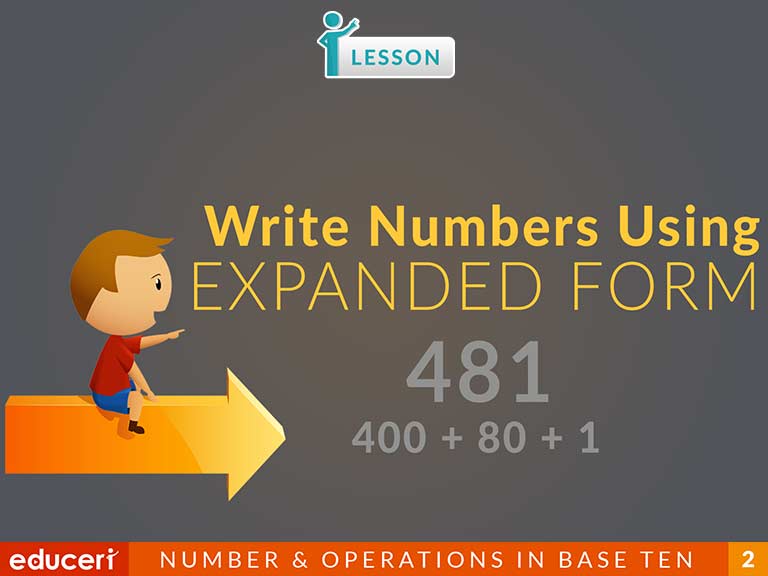
Write Numbers Using Expanded Form
This numbers and operations in base ten lesson covers how to write numbers in expanded form. The lesson includes research-based strategies and strategic questions that prepare students for assessments. In this lesson, students are asked to identify the place value of each digit in a three-digit number, and then write the number as the addition of the value of each digit.
Share This Lesson
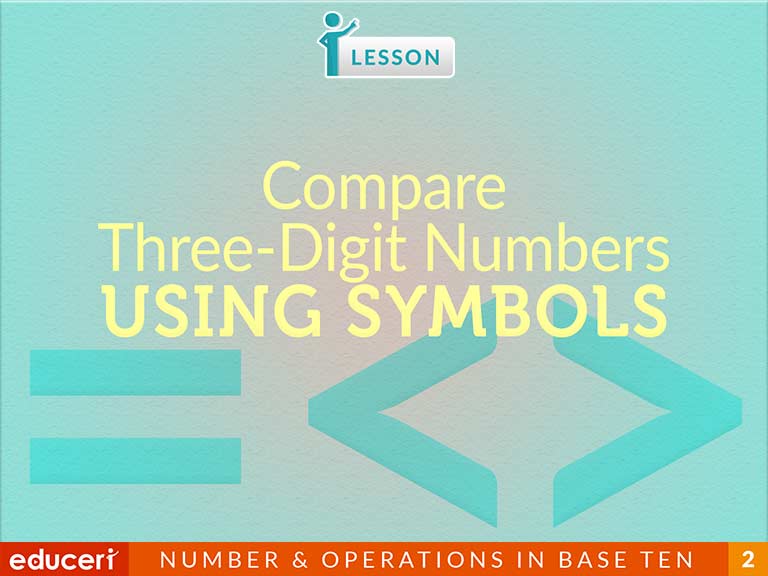
Compare Three-Digit Numbers Using Symbols
This numbers and operations in base ten lesson covers how to compare three-digit numbers using symbols. The lesson includes research-based strategies and strategic questions that prepare students for assessments. In this lesson, students are asked to compare each digit of a pair of three-digit numbers, starting at the highest place value. Then, they identify which number is less than, greater than, or equal to, and write the correct symbol.
Share This Lesson
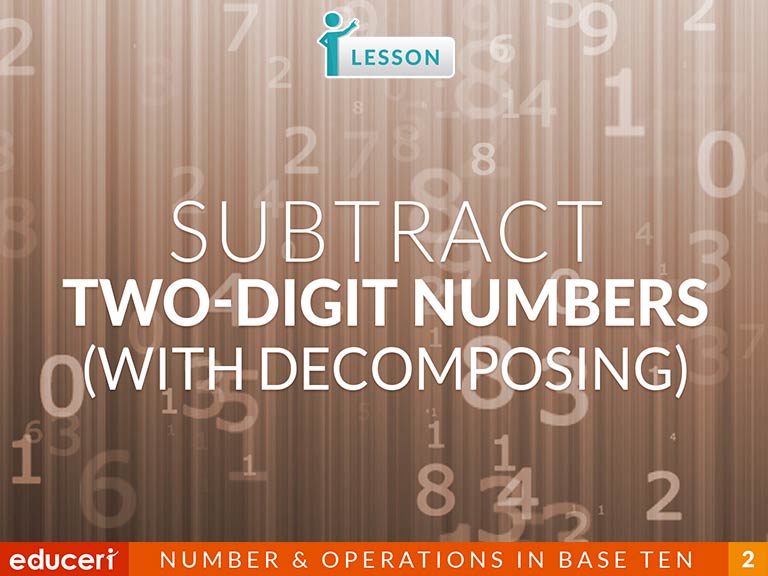
Subtract Two-Digit Numbers (With Decomposing)
This number sense lesson focuses on subtracting numbers (two digits long). The lesson includes research-based strategies and questions that help prepare students for assessments. In this lesson, students determine if regrouping is needed. Then, they subtract digits in the ones place, and in the tens place. Finally, students read the problem and sum aloud. In addition to the lesson, there are "lining up subtraction" flashcards along with seven pages of Independent Practice and review with questions modeled after current adaptive testing items.
Share This Lesson
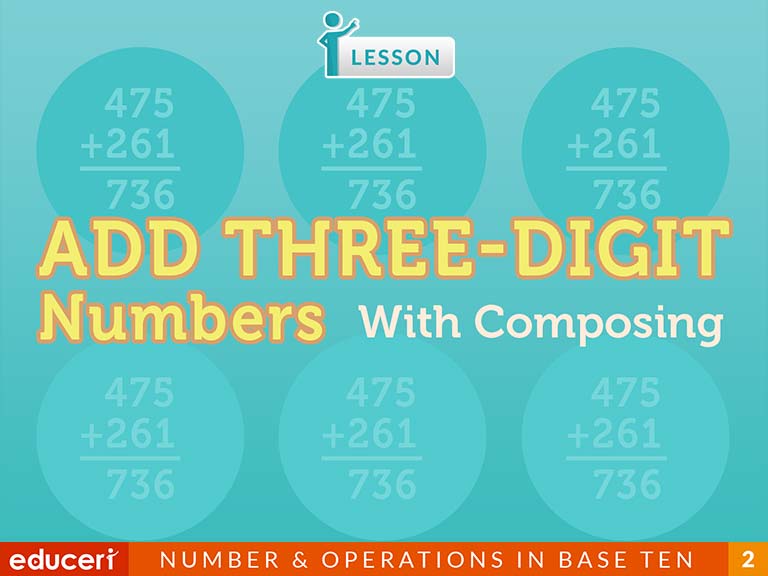
Add Three-Digit Numbers (With Regrouping)
This number sense lesson focuses on adding numbers (three digits). The lesson includes research-based strategies and questions that help prepare students for assessments. In this lesson, students add the digits in the one's place and regroup if the sum is ten or more. Then, they add the digits in the tens place and regroup if the sum is 10 or more. Finally, students read the addition problem and the sum aloud. In addition to the lesson, there are four pages of Independent Practice and review with questions modeled after current adaptive testing items.
Share This Lesson
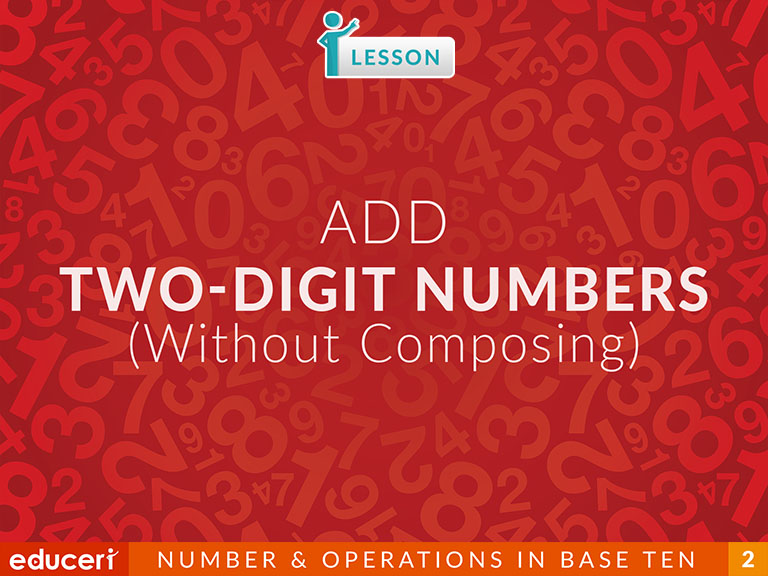
Add Two-Digit Numbers (Without Composing)
This number sense lesson focuses on adding numbers (no regrouping). The lesson includes research-based strategies and questions that help prepare students for assessments. In this lesson, students add the digits in the ones column, the tens column, and then the hundreds column, if needed. Then, they read the problem and the sum aloud. In addition to the lesson, there are eight pages of Independent Practice and review with questions modeled after current adaptive testing items.
Share This Lesson

Add Up To Four Two-Digit Numbers
This Common Core numbers and operations in base ten lesson covers how to add multiple two-digit numbers. The lesson includes research-based strategies and strategic questions that prepare students for Common Core assessments. In this lesson, students are asked to add the digits by place value. Students are also asked to regroup any group of ten or more with concept demonstrations to show what regrouping means in real terms. In addition to the lesson, there are four pages of Independent Practice with questions modeled after the Common Core assessment items.
Share This Lesson
